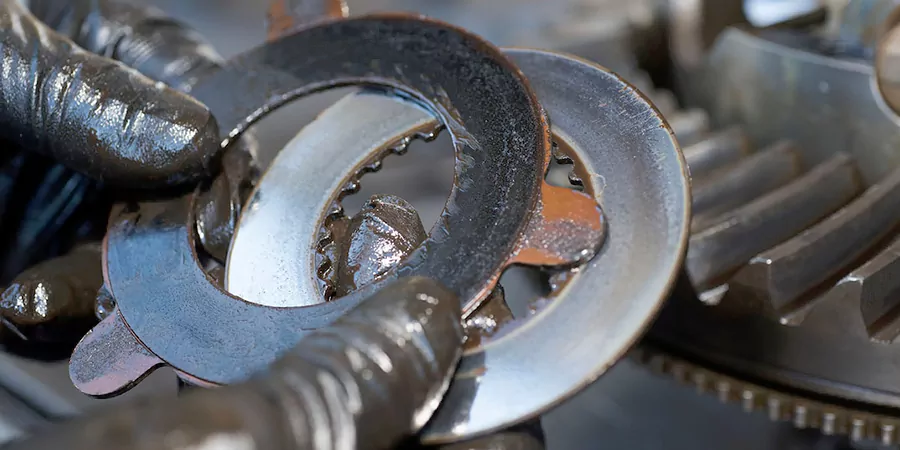Limited-slip differentials (LSDs) are crucial for enhancing traction and stability in many vehicles. They allow the two output shafts to rotate at different speeds while limiting the maximum difference between them. However, a common issue with LSDs is “limited-slip differential shudder.” Let’s explore what causes LSD shudder and how to fix it.

What is Limited-Slip Differential Shudder?
LSD shudder feels like a vibration or jerking sensation, especially noticeable when turning or accelerating from a stop. This happens because the clutch packs or gears inside the differential aren’t engaging or disengaging smoothly, leading to uneven power transfer.
Causes of LSD Shudder
Insufficient or Contaminated Differential Fluid
Differential fluid is essential for lubricating the internal parts of an LSD, like the clutch packs or helical gears. Over time, the fluid can get dirty or lose its effectiveness due to heat and oxidation. When this happens, the clutch packs can’t engage smoothly, causing the shudder.
Worn or Damaged Clutch Packs
In clutch-based LSDs, the clutch packs limit the slip between wheels. These packs can wear out from normal use, leading to inconsistent engagement and causing the differential to shudder.
Incorrect or Incompatible Fluid
Using the wrong type of differential fluid can impact LSD performance. Some fluids may not provide adequate lubrication or lack the additives needed for smooth clutch operation, leading to shuddering.
Improper Installation or Maintenance
Improper installation or lack of maintenance can also cause shudder. Misaligned components or skipping regular maintenance like fluid changes can make the differential operate inefficiently, leading to shuddering issues.
Solutions
Check and Replace Differential Fluid
Start by checking the differential fluid. If it looks dirty or smells burnt, replace it. Use the type of fluid recommended by the vehicle manufacturer, as it has the necessary additives for smooth operation.
Add Friction Modifier
Sometimes adding a friction modifier to the differential fluid can help. These additives reduce friction between the clutch packs, allowing them to engage and disengage smoothly. Consult the vehicle manufacturer or a mechanic before adding any modifiers to ensure compatibility.
Inspect and Replace Worn Components
If shudder persists after changing the fluid, inspect the clutch packs and other internal components. Replace any worn or damaged parts. This is a job for a qualified mechanic, as it involves disassembling the differential.
Regular Maintenance
Preventing LSD shudder involves regular maintenance. Follow the manufacturer’s recommendations for fluid changes and have the differential inspected regularly to catch any issues early.
Professional Diagnosis and Repair
If you can’t resolve the shudder on your own, seek professional help. A skilled mechanic can diagnose the root cause and perform the necessary repairs to restore smooth operation.
Conclusion
LSD shudder can be frustrating, but understanding its causes and solutions can help you maintain your vehicle’s performance. Regular maintenance, using the right fluids, and timely replacement of worn components are key to preventing and addressing shudder. By taking these steps, you can ensure your limited-slip differential continues to provide optimal traction and stability, enhancing your driving experience.



